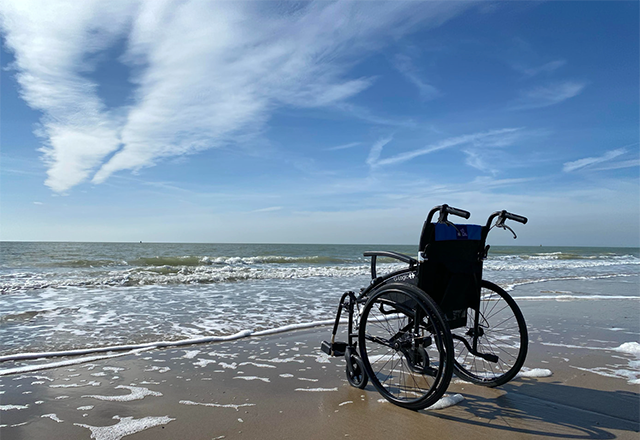You are here
People with disabilities see long road ahead to accessible public transport
By Rayya Al Muheisen - Nov 21,2022 - Last updated at Nov 21,2022

Representative image (Photo courtesy of unsplash/Marianne Bos)
AMMAN — Although the quantity of public transport vehicles has increased by 5 per cent since last year, people with disabilities are calling for a more inclusive public transport system.
The Ministry of Transport issued a report titled “Performance Indicators for Public Transportation Sector in Jordan”, which covers the third quarter of 2022 and noted the increase.
According to the report, 68 per cent of Jordanians are satisfied with the public transport services, and the ratio for public transport buses for every individual stand at 0.58 for every 1,000.
The report also stated that the total transport vehicles in service, which includes buses, taxis as well as medium- and small-sized passenger vehicles currently stand at 37,002. However, the amount of public transport vehicles able to serve persons with disabilities remained consistent, standing at 30 taxis and 24 buses nationwide.
“There’s no public transport for persons with disabilities,” Ali, who uses a wheelchair, told The Jordan Times.
Ali added that people with disabilities have to book a car to move from one place to another.
“Some taxi drivers refuse to take passengers on wheelchairs,” Ali said, adding that “wheelchair users need a ramp to get on and off vehicles”.
Furthermore, “we do not feel confident enough to use public transport”, he said.
According to Ali, transport barriers range from “absence” of accessible transport and also the deterring attitude of some taxi and bus drivers.
“We need significant investment in accessibility improvements,” Ali added.
Ali added that most of the people with disabilities can’t travel and use transport easily; “they are being excluded from employment opportunities”.
“We find it harder to access health and education services and it’s not as easy for us to go out and meet up with friends,” Ali added.
Ali stated that when people face these barriers to travel, it not only reduces their opportunities, but it can also change their aspirations in life. “Many of the wheelchair users give up and refuse to leave their homes due to travel difficulties,” said Ali.
“We’re calling for the wider community, government and other transport providers to make travel more inclusive,” Ali added.
Aboud, who also uses a wheelchair, told The Jordan Times that last month, he tried to get on an accessible bus, which has a special space for wheelchair users, but the space was occupied.
“Although some buses have special places reserved for those travelling with wheelchairs, some passengers don’t comply with the standards,” Aboud said.
“The social inclusion efforts are not enough, we need wider accessibility and social acceptance,” he added.
Rafat Zeetawi, Higher Council for the Rights of Persons with Disabilities’ (HCD) Spokesperson, highlighted the urgent need to develop the transport system to adapt to the needs of people with disabilities.
“Persons with disabilities are offered custom exemptions for cars to compensate the lack of proper transport system that carters to their needs,” Zeetawi told The Jordan Times.
However, Zeetawi noted that the Bus Rapid Transit (BRT) system is designed with transporting people with disabilities in mind. “Not only the buses but also the stations,” said Zeetawi.
According to the spokesperson, there are currently over 20 BRT (which operate only in Amman) in service that are capable of transporting people with disabilities.
However, “there’s a significant absence of taxis that serve people with disabilities,” Zeetawi said.
“We are currently developing a long-term strategic plan for transport together with the Ministry of Transport to ensure safe and secure transport for people with disabilities,” Zeetawi added.
The HCD, in cooperation with the Transport Ministry, is planning to hold awareness campaigns and trainings for the transport sector workforce to develop a better understanding of the needs of people with disabilities and the proper ways to assist them.
“Additionally, we will equip some transport vehicles with the equipment needed to cater to the needs of people with disabilities,” said Zeetawi.
Related Articles
AMMAN — Most archaeological sites in Jordan are inaccessible for people with disabilities and facilitating the access to those locations is
AMMAN — Jordan's tourist attractions remain largely inaccessible for people with disabilities, propelling a “persistent demand” from activis
AMMAN — Hadeel Abu Sufa, a young Jordanian woman, said she is barely able to go to any supermarket to buy groceries, or any store to get som














